Solar strings of lights have revolutionized outdoor lighting, offering an eco-friendly, cost-effective, and versatile way to illuminate patios, gardens, decks, and more. Powered by renewable solar energy, these lights combine sustainability with aesthetic appeal, making them a favorite for homeowners and event planners alike. This comprehensive guide explores the types of solar strings of lights, provides detailed setup instructions, shares maintenance tips, and offers troubleshooting advice to ensure your outdoor lighting shines brightly year-round.
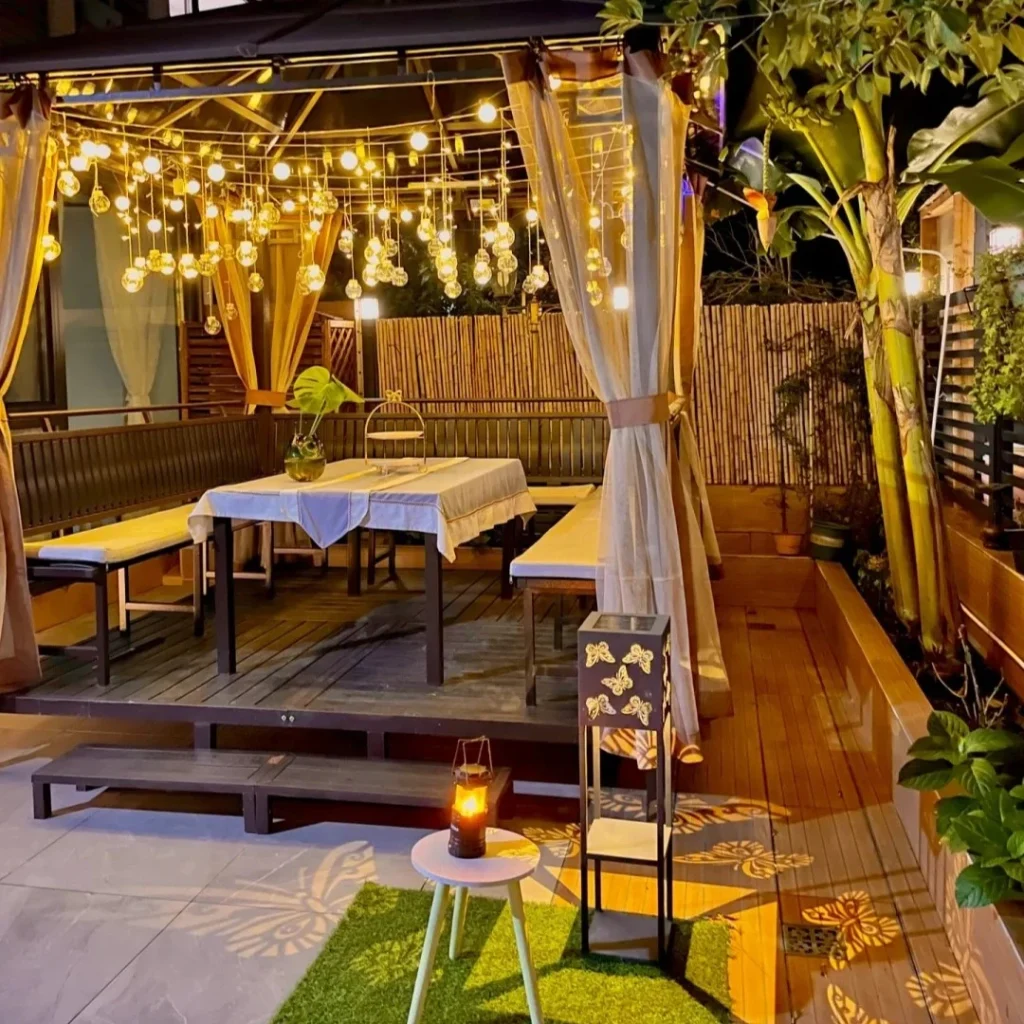
Types of Solar Strings of Lights
Understanding the different types of solar strings of lights is the first step to choosing the right option for your outdoor space. Each type offers unique features suited to specific aesthetics and functions.
- Fairy Lights
Fairy lights feature tiny LED bulbs on thin, flexible wires, creating a delicate, whimsical glow. Ideal for wrapping around trees, shrubs, or pergolas, they add a magical touch to gardens or event spaces. Available in warm white, cool white, or multicolor, fairy lights typically span 10–100 feet and are perfect for intricate designs. - Globe String Lights
Globe lights have larger, round bulbs that evoke a vintage or festive vibe. They’re excellent for patios, decks, or outdoor dining areas, providing a soft, ambient glow. Globe lights often come in 20–50-foot strands with bulbs spaced 1–2 feet apart, offering a bold yet elegant look. - Rope Lights
Rope lights encase LEDs in flexible, weather-resistant tubing, making them highly durable and adaptable. They’re ideal for outlining fences, railings, or pathways, as the tubing allows for creative shaping. Available in lengths up to 100 feet, rope lights are a versatile choice for both decorative and functional lighting. - Edison-Style String Lights
Inspired by vintage filament bulbs, Edison-style solar string lights combine retro charm with modern LED efficiency. These lights are perfect for creating a cozy, nostalgic atmosphere on porches or patios. They typically come in shorter strands (20–30 feet) due to their larger bulb size. - Lantern-Style String Lights
Lantern-style lights feature small, decorative lanterns housing LEDs, adding a bohemian or festive flair. They’re great for special events or as accent lighting in gardens. These lights are often shorter (10–25 feet) but make a strong visual impact.
Setup Instructions for Solar Strings of Lights
Proper installation is key to maximizing the performance and longevity of solar strings of lights. Follow these steps for a seamless setup:
- Plan Your Layout
Measure the area you want to illuminate to determine the required strand length. For example, a small patio may need a 20-foot strand, while a large garden could require 50–100 feet. Sketch your design, noting where the solar panel will be placed and how the lights will be secured (e.g., draped, wrapped, or hung). - Position the Solar Panel
The solar panel must receive 6–8 hours of direct sunlight daily. Choose a location free from shade, such as an open lawn or south-facing wall. Use the included stake to plant the panel in the ground or a clip to mount it on a surface. Angle the panel to face the sun’s path for optimal charging. - Test the Lights
Before installation, charge the solar panel for a full day and test the lights at night. Confirm that the LEDs illuminate consistently and that the dusk-to-dawn sensor activates automatically. This step helps identify any defects early. - Install the Lights
Secure the lights using clips, zip ties, or adhesive hooks, depending on the surface (e.g., wood, metal, or masonry). For fairy or rope lights, wrap them loosely around structures to avoid straining the wires. For globe or lantern lights, hang them with even spacing to prevent sagging. Ensure the wiring is taut but not overstretched. - Secure the Wiring
Tuck excess wiring out of sight or secure it with cable ties to maintain a clean look. If the lights are in a high-traffic area, keep them elevated or out of reach to prevent damage.
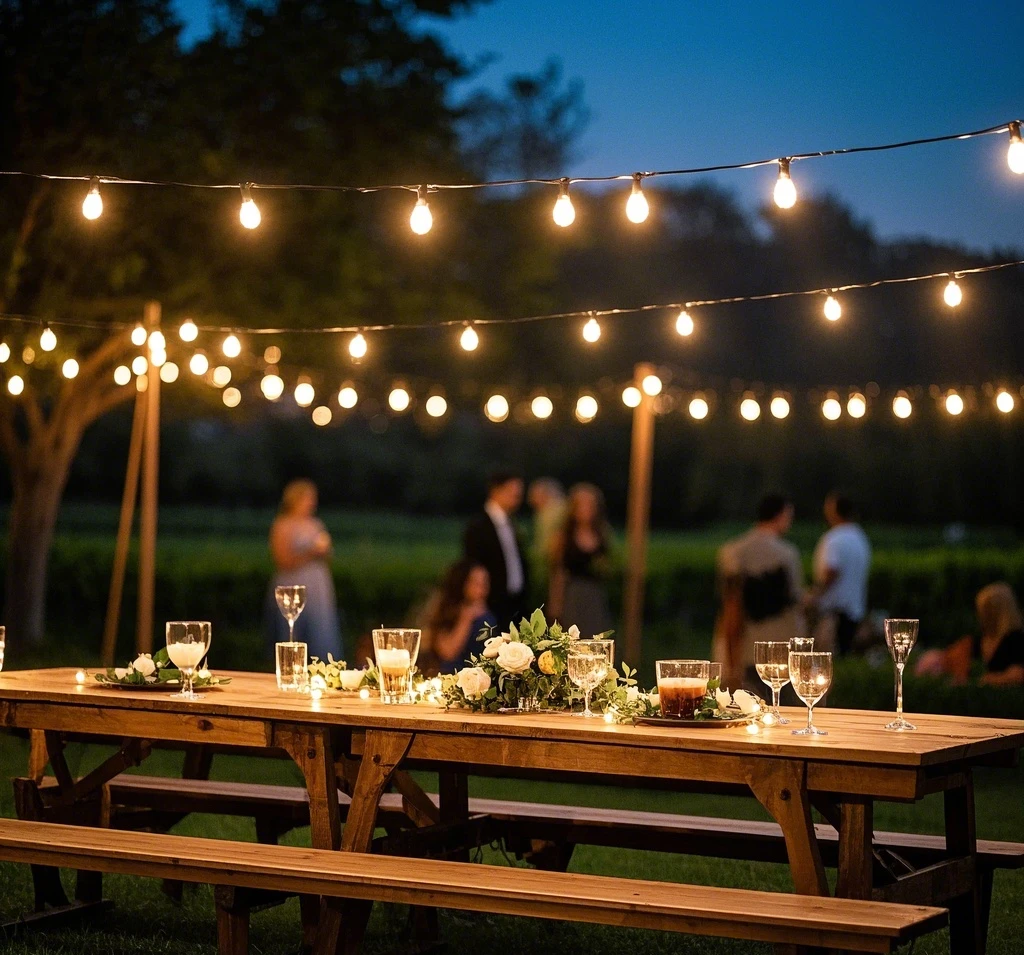
Maintenance Tips for Long-Lasting Performance
Regular maintenance ensures your solar strings of lights remain bright and functional. Here are essential tips to keep them in top condition:
- Clean the Solar Panel
Dust, dirt, or debris on the solar panel can reduce charging efficiency. Wipe the panel with a damp cloth every 1–2 months, especially after storms or in dusty climates. Avoid abrasive cleaners that could scratch the surface. - Inspect for Damage
Check the lights periodically for signs of wear, such as cracked bulbs, frayed wires, or corroded connections. After extreme weather (e.g., heavy rain or wind), inspect the setup to ensure everything remains secure. Replace damaged sections promptly to prevent electrical issues. - Maintain the Battery
Most solar string lights use rechargeable Ni-MH or lithium-ion batteries, which last 1–2 years with regular use. If the lights dim or fail to stay on, replace the battery with a compatible model (check the product manual for specifications). Store lights indoors during prolonged non-use to preserve battery life. - Store in Off-Seasons
In regions with harsh winters or extended cloudy periods, store the lights indoors to protect them from freezing temperatures or moisture. Coil the strands loosely to avoid tangling and keep the solar panel in a dry, dust-free environment. - Adjust for Seasonal Changes
As the sun’s angle changes throughout the year, reposition the solar panel to maintain optimal sunlight exposure. For example, tilt it higher in winter to capture lower sunlight.
Troubleshooting Common Issues
Even the best solar strings of lights can encounter issues. Here’s how to diagnose and resolve common problems:
- Lights Don’t Turn On
- Cause: Insufficient charge due to a shaded solar panel or cloudy weather.
- Solution: Relocate the panel to a sunnier spot and allow a full day of charging. If the problem persists, test the battery and replace it if necessary.
- Cause: Faulty dusk-to-dawn sensor.
- Solution: Cover the sensor to simulate darkness and check if the lights activate. If not, the sensor may need professional repair or replacement.
- Dim or Flickering Lights
- Cause: Low battery charge or aging LEDs.
- Solution: Ensure the solar panel is clean and properly positioned. If the LEDs are old (beyond 20,000 hours), consider replacing the strand, as individual bulb replacements are often impractical.
- Lights Turn Off Prematurely
- Cause: Weak battery or insufficient charging time.
- Solution: Verify that the panel receives adequate sunlight. If the battery is old, replace it with a higher-capacity model (e.g., 1200 mAh lithium-ion). Some models offer USB charging as a backup for cloudy days.
- Water Damage or Corrosion
- Cause: Poor weather resistance or improper installation.
- Solution: Check the IP rating (IP65 or higher is ideal) and ensure the lights are designed for outdoor use. If corrosion occurs, replace affected sections and secure connections with waterproof tape.
- Uneven Brightness
- Cause: Low-quality LEDs or loose connections.
- Solution: Tighten any loose wiring and test the strand. If the issue persists, opt for a higher-quality replacement with consistent LED output.
Enhancing Outdoor Spaces with Solar Strings of Lights
Solar strings of lights are incredibly versatile, transforming outdoor spaces into inviting, functional areas. Here are some creative ideas:
- Gardens: Weave fairy lights through shrubs or along pathways to highlight landscaping and improve safety.
- Patios and Decks: Hang globe or Edison-style lights overhead for a cozy, restaurant-like ambiance.
- Fences and Railings: Wrap rope lights around railings for a sleek, modern look that enhances visibility.
- Events: Use lantern-style or multicolor fairy lights for weddings, parties, or holiday decorations, leveraging their portability and wireless design.
For a layered effect, combine multiple types of solar string lights (e.g., fairy lights with globe lights) or pair them with other solar-powered features, like lanterns or stake lights. According to a 2024 report by the International Renewable Energy Agency, solar lighting solutions like these could reduce global residential energy consumption by up to 4% by 2030, underscoring their environmental impact.
Conclusion
Solar strings of lights are a sustainable, stylish, and practical solution for outdoor lighting. By understanding the types—fairy, globe, rope, Edison, and lantern—you can choose the perfect fit for your space. With proper setup, regular maintenance, and quick troubleshooting, these lights will illuminate your outdoor areas for years. Whether you’re enhancing a garden, decorating a patio, or hosting an event, solar string lights offer endless possibilities to create a radiant, eco-friendly ambiance. Embrace this ultimate guide and let your outdoor space shine with the power of the sun.



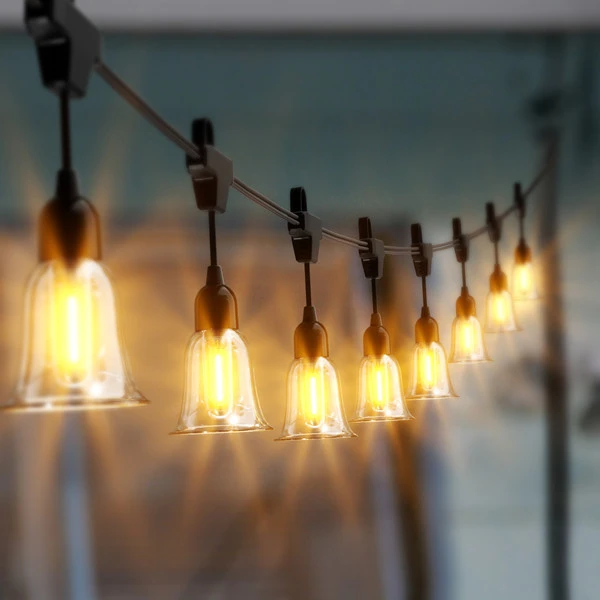
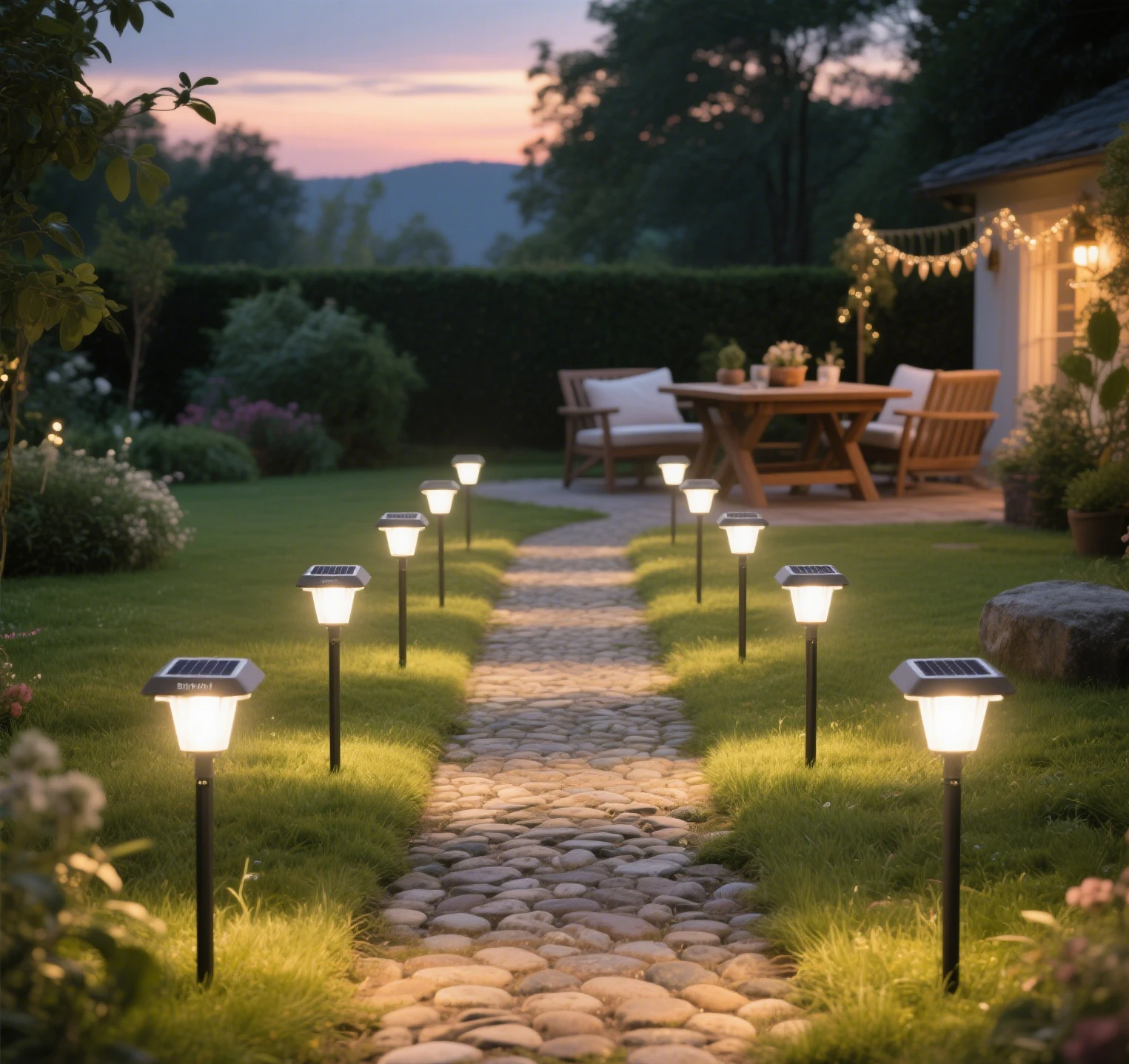
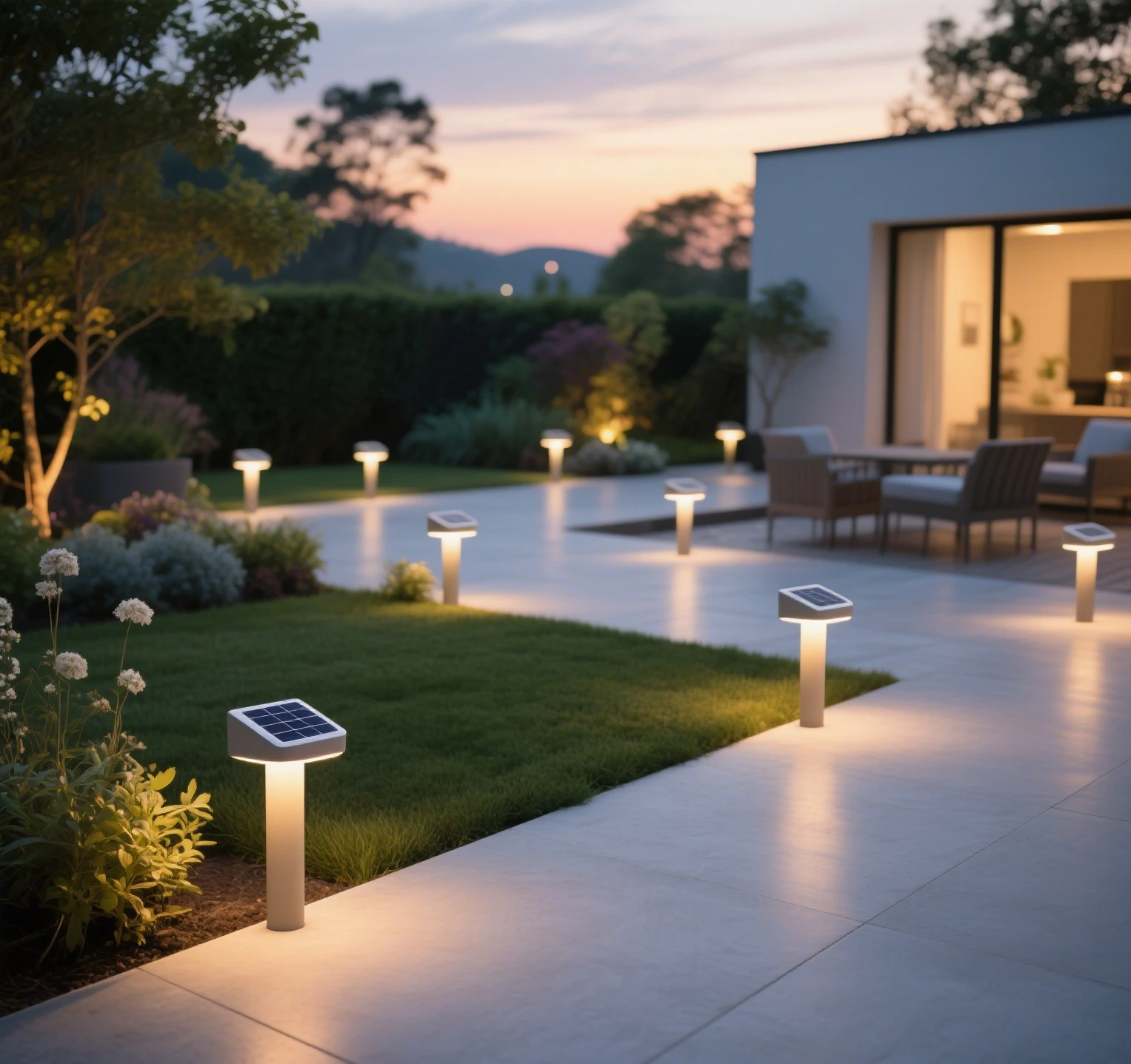

Leave a Reply